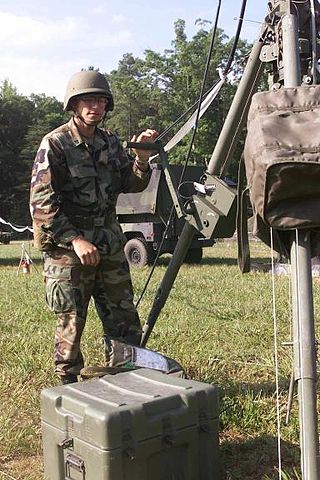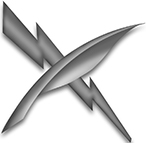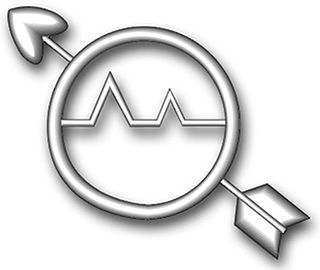Scope of work
The Radiomen of the US Navy were responsible for transmitting and receiving radio signals, and processing all forms of telecommunications through various transmission media aboard ships, aircraft and at shore facilities. [3] This was done utilizing various frequencies in the ELF, VLF, LF, MF, HF, VHF, UHF, SHF and EHF spectrums. The type of circuits maintained included voice and data circuits between the ships of a battle group and allied units. Their duties also included message systems for generalized broadcasts and unit specific messages that were handled based on message priority and handling procedures. They were also responsible for the proper handling and destruction of classified material.
Radiomen were also responsible for periodic maintenance of the communications equipment, to include transmitters, receivers and antennas.

Radioteletype (RTTY) is a telecommunications system consisting originally of two or more electromechanical teleprinters in different locations connected by radio rather than a wired link. Radioteletype evolved from earlier landline teleprinter operations that began in the mid-1800s. The US Navy Department successfully tested printing telegraphy between an airplane and ground radio station in 1922. Later that year, the Radio Corporation of America successfully tested printing telegraphy via their Chatham, Massachusetts, radio station to the R.M.S. Majestic. Commercial RTTY systems were in active service between San Francisco and Honolulu as early as April 1932 and between San Francisco and New York City by 1934. The US military used radioteletype in the 1930s and expanded this usage during World War II. From the 1980s, teleprinters were replaced by personal computers (PCs) running software to emulate teleprinters.

A teleprinter is an electromechanical device that can be used to send and receive typed messages through various communications channels, in both point-to-point and point-to-multipoint configurations. Initially they were used in telegraphy, which developed in the late 1830s and 1840s as the first use of electrical engineering, though teleprinters were not used for telegraphy until 1887 at the earliest. The machines were adapted to provide a user interface to early mainframe computers and minicomputers, sending typed data to the computer and printing the response. Some models could also be used to create punched tape for data storage and to read back such tape for local printing or transmission.
Radiotelephony procedure includes various techniques used to clarify, simplify and standardize spoken communications over two-way radios, in use by the armed forces, in civil aviation, police and fire dispatching systems, citizens' band radio (CB), and amateur radio.

The KW-37, code named JASON, was an encryption system developed In the 1950s by the U.S. National Security Agency to protect fleet broadcasts of the U.S. Navy. Naval doctrine calls for warships at sea to maintain radio silence to the maximum extent possible to prevent ships from being located by potential adversaries using radio direction finding. To allow ships to receive messages and orders, the navy broadcast a continuous stream of information, originally in Morse code and later using radioteletype. Messages were included in this stream as needed and could be for individual ships, battle groups or the fleet as a whole. Each ship's radio room would monitor the broadcast and decode and forward those messages directed at her to the appropriate officer. The KW-37 was designed to automate this process. It consisted of two major components, the KWR-37 receive unit and the KWT-37 transmit unit. Each ship had a complement of KWR-37 receivers that decrypted the fleet broadcast and fed the output to teleprinter machines. KWT-37's were typically located at shore facilities, where high power transmitters were located.

A signaller, signalman, colloquially referred to as a radioman or signaleer in the armed forces is a specialist soldier, sailor or airman responsible for military communications. Signallers, a.k.a. Combat Signallers or signalmen or women, are commonly employed as radio or telephone operators, relaying messages for field commanders at the front line, through a chain of command which includes field headquarters. Messages are transmitted and received via a communications infrastructure comprising fixed and mobile installations.
The AT&T High Seas Service was a radiotelephone service that provided ship-to-shore telephone calls, which consisted of stations WOO, WOM ([Receiver site in Plantation, Florida 26°8′36.09″N80°11′55.76″W; transmitter on Krome Ave. 25°52′21.57″N80°29′2.44″W and KMI (transmitter station in Dixon, California, receiver station in Point Reyes, California.

The Teletype Model 33 is an electromechanical teleprinter designed for light-duty office use. It is less rugged and cost less than earlier Teletype machines. The Teletype Corporation introduced the Model 33 as a commercial product in 1963 after being originally designed for the United States Navy. There are three versions of the Model 33:

Cryptologic Technician (CT) is a United States Navy enlisted rating or job specialty. The CT community performs a wide range of tasks in support of the national intelligence-gathering effort, with an emphasis on cryptology and signal intelligence related products.
The Navy Enlisted Classification (NEC) system supplements the rating designators for enlisted members of the United States Navy. A naval rating and NEC designator are similar to the Military Occupational Specialty (MOS) designators used in the U.S. Army and U.S. Marine Corps and the Air Force Specialty Code (AFSC) used in the U.S. Air Force.

Aviation electronics technician (AT) is a US Navy enlisted rating or job specialty. At the paygrade of E-9, ATs merge with the aviation electrician's mate (AE) rating to become avionics technicians (AV). There has been talk of completely merging the two ratings, but as yet no definite plans have been announced. Aviation electronics technicians wear the specialty mark of a winged helium atom.

Operations Specialist is a United States Navy and United States Coast Guard occupational rating. It is a sea duty-intensive rating in the Navy while most of Coast Guard OS's are at ashore Command Centers.
A radiogram is a formal written message transmitted by radio. Also known as a radio telegram or radio telegraphic message, radiograms use a standardized message format, form and radiotelephone and/or radiotelegraph transmission procedures. These procedures typically provide a means of transmitting the content of the messages without including the names of the various headers and message sections, so as to minimize the time needed to transmit messages over limited and/or congested radio channels. Various formats have been used historically by maritime radio services, military organizations, and Amateur Radio organizations.

The United States Navy occupational rating of boatswain's mate is a designation given by the Bureau of Naval Personnel (BUPERS) to enlisted members who were rated or "striking" for the rating as a deck seaman. The colloquial form of address for a boatswain's mate is "Boats".

Information systems technician (IT) is a rating for United States Navy and United States Coast Guard enlisted personnel, specializing in communications technology. Information systems technician submarines (ITS) is a rating for U.S. Navy submariners. The Information systems technician (IT) rating corresponds to the new Navy Occupational Specialty (NOS) code B460 while the information systems technician submarines (ITS) rating corresponds to Navy Occupational Specialty (NOS) code C260.

The United States Navy job rating of electronics technician (ET) is a designation given by the Bureau of Naval Personnel (BUPERS) to enlisted members who satisfactorily complete initial Electronics Technician "A" school training.
The On the Roof Gang was a group of United States Navy cryptologists and radiomen during World War II who are seen as the forerunners of U.S. Navy cryptology and cryptanalysis. One hundred fifty Sailors and 26 Marines worked on the roof of the Navy Department building in Washington, D.C. from 1928 to 1941.
The Radio Materiel School (RMS), operated by the United States Navy, was the first electronics training facility of America’s military organizations. During the 1920s and 1930s, it produced the core of senior maintenance specialists for the Navy’s communication equipment that “paved the way to United States world leadership in electronics.”
16-line message format, or Basic Message Format, is the standard military radiogram format for the manner in which a paper message form is transcribed through voice, Morse code, or TTY transmission formats. The overall structure of the message has three parts: HEADING, TEXT, and ENDING. This heading is further divided into procedure, preamble, address, and prefix. Each format line contains pre-defined content. An actual message may have fewer than 16 actual lines, or far more than 16, because some lines are skipped in some delivery methods, and a long message may have a TEXT portion that is longer than 16 lines by itself.
Broadcast to Allied Merchant Ships (BAMS) was a protocol and system of broadcasts for Allied Merchant ship convoys that was used during World War II to provide for the transmission of official messages to merchant ships in any part of the world. The BAMS system is designed for communication by the best employment of radio stations available.
Radio man or variations may refer to:












